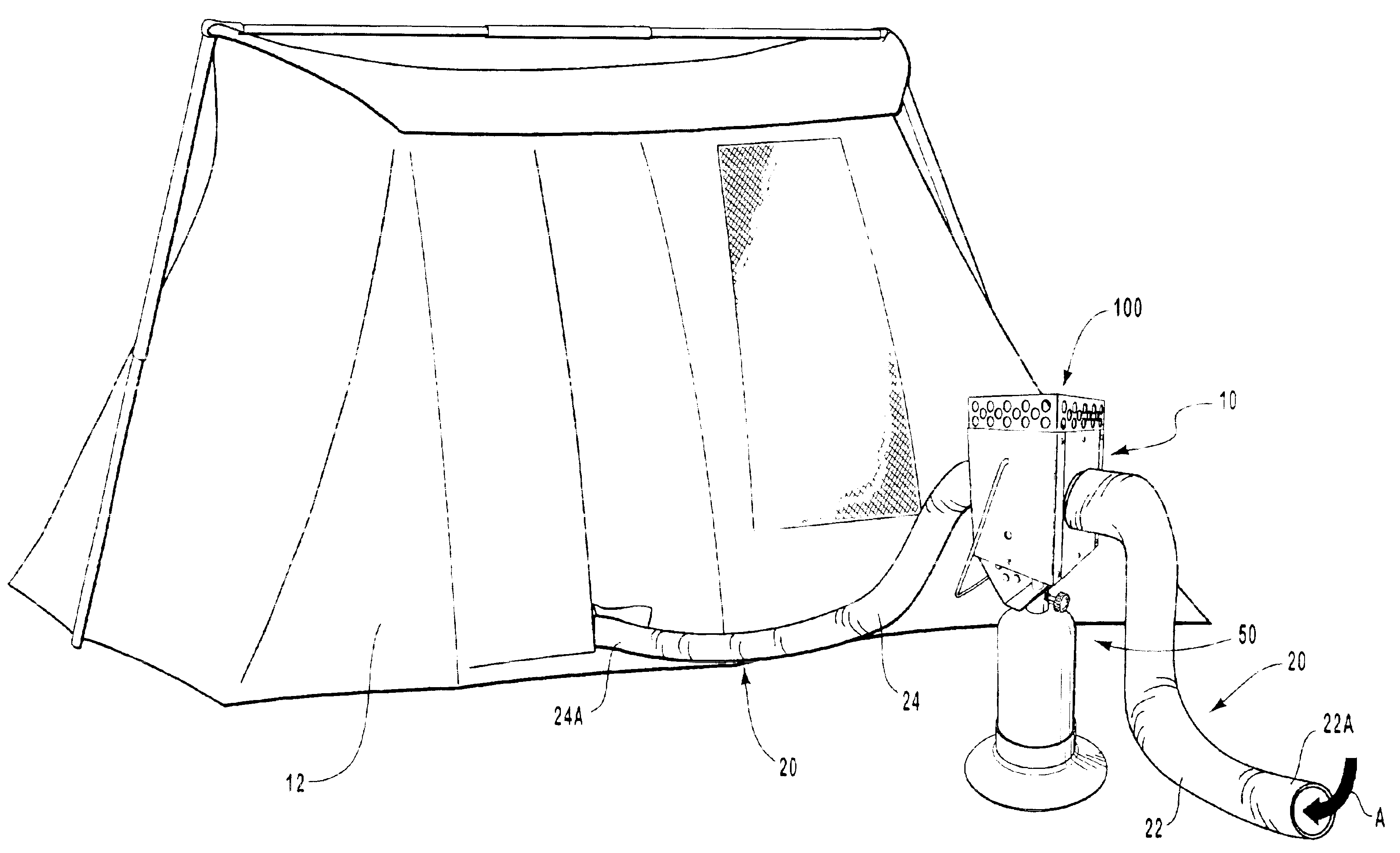Portable air heating system
a heating system and air technology, applied in the field of portable air heating systems, can solve the problems of limited value of heat packets, people in remote areas are often subject to extreme temperature variations, and experience much lower temperatures, and achieve the effects of reliable, efficient and safe heat supply, and convenient assembly and disassembly
- Summary
- Abstract
- Description
- Claims
- Application Information
AI Technical Summary
Benefits of technology
Problems solved by technology
Method used
Image
Examples
Embodiment Construction
[0033]Reference will now be made to the figures where various structures will be provided with reference number designations. It is understood that the drawings are diagrammatic and schematic representations of possible embodiments of the invention, and are not intended to limit the scope of the present invention nor are they necessarily drawn to scale. Further, one skilled in the art will appreciate that terms such as top, bottom, upper, and lower as used herein are merely words used to describe the accompanying figures, and are not meant to limit the scope of the present invention in any way.
[0034]FIGS. 1-9 depict various elements of a self-contained, portable air heating system. Advantageously, the inventive portable heating system provides a reliable source of heated air to an enclosed structure, such as a tent or camp trailer, while eliminating the introduction of potentially dangerous exhaust gases, such as carbon monoxide, into the enclosed structure. In addition, the air hea...
PUM
 Login to View More
Login to View More Abstract
Description
Claims
Application Information
 Login to View More
Login to View More - R&D
- Intellectual Property
- Life Sciences
- Materials
- Tech Scout
- Unparalleled Data Quality
- Higher Quality Content
- 60% Fewer Hallucinations
Browse by: Latest US Patents, China's latest patents, Technical Efficacy Thesaurus, Application Domain, Technology Topic, Popular Technical Reports.
© 2025 PatSnap. All rights reserved.Legal|Privacy policy|Modern Slavery Act Transparency Statement|Sitemap|About US| Contact US: help@patsnap.com



